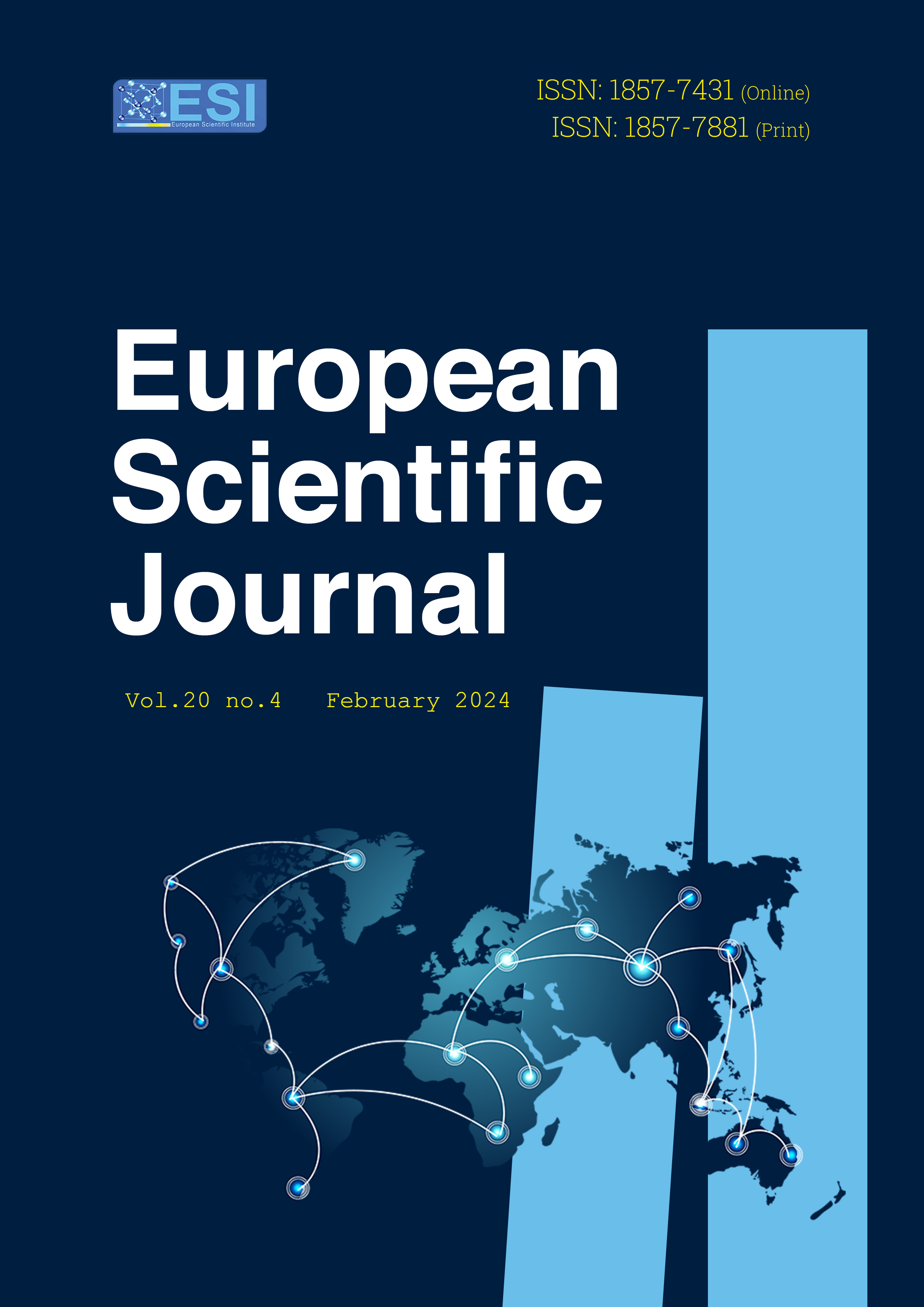The Role of Macroeconomic Variables in Forecasting Equity Market Volatility in the East African Community Using Garch-Midas Model
Abstract
This study delves into the dynamic relationship between macroeconomic variables and equity market volatility in the East African Community. The research employs the Generalized Autoregressive Conditional Heteroskedasticity (GARCH) model coupled with the Mixed Data Sampling (MIDAS) approach. Through a comparative process, it is found that the different macroeconomic variables exhibit heterogeneous effects on the different countries in the East African community that is macroeconomic factors significantly explain the variation in stock market volatility in Uganda and including these factors in the GARCH-MIDAS model improved its forecasting ability, however, in Kenya it was found that majority of the macroeconomic variables had insignificant effects on stock market volatility and didn’t improve the forecasting ability of the GARCH-MIDAS model.
Downloads
Metrics
PlumX Statistics
References
2. Chen, X., & Ghysels, E. (2011). News - Good or bad - and its impact on volatility predictions over multiple horizons. Review of Financial Studies, 24(1), 46–81. https://doi.org/10.1093/rfs/hhq071
3. Chen, Z., Ye, Y., & Li, X. (2022). Forecasting China’s crude oil futures volatility: New evidence from the MIDAS-RV model and COVID-19 pandemic. Resources Policy, 75. https://doi.org/10.1016/j.resourpol.2021.102453
4. Engle, R. F., Ghysels, E., & Sohn, B. (2013). STOCK MARKET VOLATILITY AND MACROECONOMIC FUNDAMENTALS. In Source: The Review of Economics and Statistics (Vol. 95, Issue 3). https://about.jstor.org/terms
5. Fang, T., Lee, T. H., & Su, Z. (2020). Predicting the long-term stock market volatility: A GARCH-MIDAS model with variable selection. Journal of Empirical Finance, 58, 36–49. https://doi.org/10.1016/j.jempfin.2020.05.007
6. Fang, Y., Fan, Y., Haroon, M., & Dilanchiev, A. (2023). Exploring the relationship between global economic policy and volatility of crude futures: A two-factor GARCH-MIDAS analysis. Resources Policy, 85. https://doi.org/10.1016/j.resourpol.2023.103766
7. Ghysels, E., Santa-Clara, P., & Valkanov, R. (n.d.). The MIDAS Touch: Mixed Data Sampling Regression Models *.
8. Ghysels, E., Sinko, A., & Valkanov, R. (n.d.). MIDAS Regressions: Further Results and New Directions *.
9. Ghysels, E., & Valkanov, R. (n.d.). Granger Causality Tests with Mixed Data Frequencies.
10. Kotze, G. L. 2007. Forecasting inflation with high frequency asset price data. Working Paper. University of Stellenbosch.
11. Liang, C., Xia, Z., Lai, X., & Wang, L. (2022). Natural gas volatility prediction: Fresh evidence from extreme weather and extended GARCH-MIDAS-ES model. Energy Economics, 116. https://doi.org/10.1016/j.eneco.2022.106437
12. Maqsood, A., Safdar, S., Shafi, R., & Lelit, N. J. (2017). Modeling Stock Market Volatility Using GARCH Models: A Case Study of Nairobi Securities Exchange (NSE). Open Journal of Statistics, 07(02), 369–381. https://doi.org/10.4236/ojs.2017.72026
13. Marselline, K. A. (2019). The status quo of East African stock markets: Integration and volatility. African Journal of Business Management, 13(5), 176–187. https://doi.org/10.5897/ajbm2019.8742
14. Namugaya, J., Waititu, A. G., & Ka Diongue, A. (2019). Forecasting stock returns volatility on Uganda securities exchange using TSK fuzzy-GARCH and GARCH models. Reports on Economics and Finance, 5(1), 1–14. https://doi.org/10.12988/ref.2019.81022
15. Namugaya, J., Weke, P. G. O., & Charles, W. M. (2014). Modelling stock returns volatility on Uganda securities exchange. Applied Mathematical Sciences, 8(101–104), 5173–5184. https://doi.org/10.12988/ams.2014.46394
16. Raza, S. A., Masood, A., Benkraiem, R., & Urom, C. (2023). Forecasting the volatility of precious metals prices with global economic policy uncertainty in pre and during the COVID-19 period: Novel evidence from the GARCH-MIDAS approach. Energy Economics, 120. https://doi.org/10.1016/j.eneco.2023.106591
17. Salisu, A. A., Gupta, R., & Demirer, R. (2022). Global financial cycle and the predictability of oil market volatility: Evidence from a GARCH-MIDAS model. Energy Economics, 108. https://doi.org/10.1016/j.eneco.2022.105934
18. Salisu, A. A., Ogbonna, A. E., Lasisi, L., & Olaniran, A. (2022). Geopolitical risk and stock market volatility in emerging markets: A GARCH – MIDAS approach. North American Journal of Economics and Finance, 62. https://doi.org/10.1016/j.najef.2022.101755
19. Segnon, M., Gupta, R., & Wilfling, B. (2023). Forecasting stock market volatility with regime-switching GARCH-MIDAS: The role of geopolitical risks. International Journal of Forecasting. https://doi.org/10.1016/j.ijforecast.2022.11.007
20. Tumala, M. M., Salisu, A. A., & Gambo, A. I. (2023). Disentangled oil shocks and stock market volatility in Nigeria and South Africa: A GARCH-MIDAS approach. Economic Analysis and Policy, 78, 707–717. https://doi.org/10.1016/j.eap.2023.04.009
21. Wang, L., Wu, J., Cao, Y., & Hong, Y. (2022). Forecasting renewable energy stock volatility using short and long-term Markov switching GARCH-MIDAS models: Either, neither or both? Energy Economics, 111. https://doi.org/10.1016/j.eneco.2022.106056
22. Wang, L., Zhao, C., Liang, C., & Jiu, S. (2022). Predicting the volatility of China’s new energy stock market: Deep insight from the realized EGARCH-MIDAS model. Finance Research Letters, 48. https://doi.org/10.1016/j.frl.2022.102981
23. Zhao, J. (2022). Exploring the influence of the main factors on the crude oil price volatility: An analysis based on GARCH-MIDAS model with Lasso approach. Resources Policy, 79. https://doi.org/10.1016/j.resourpol.2022.103031
24. Zhou, Z., Fu, Z., Jiang, Y., Zeng, X., & Lin, L. (2020). Can economic policy uncertainty predict exchange rate volatility? New evidence from the GARCH-MIDAS model. Finance Research Letters, 34. https://doi.org/10.1016/j.frl.2019.08.006
Copyright (c) 2024 Lin Wen Sheng, Mutebi Jade

This work is licensed under a Creative Commons Attribution 4.0 International License.








